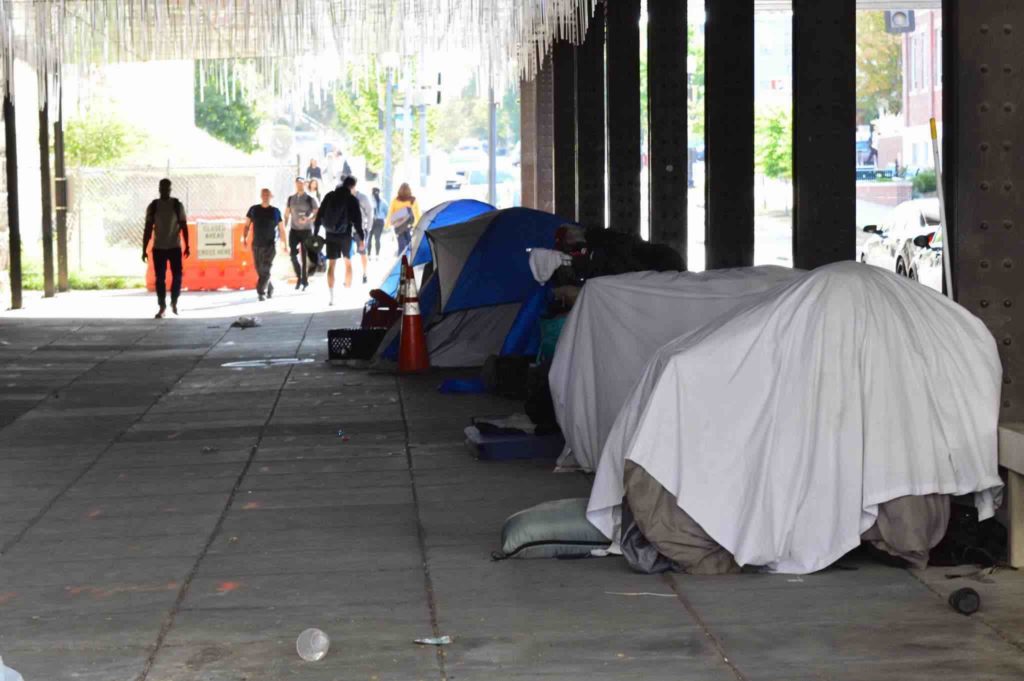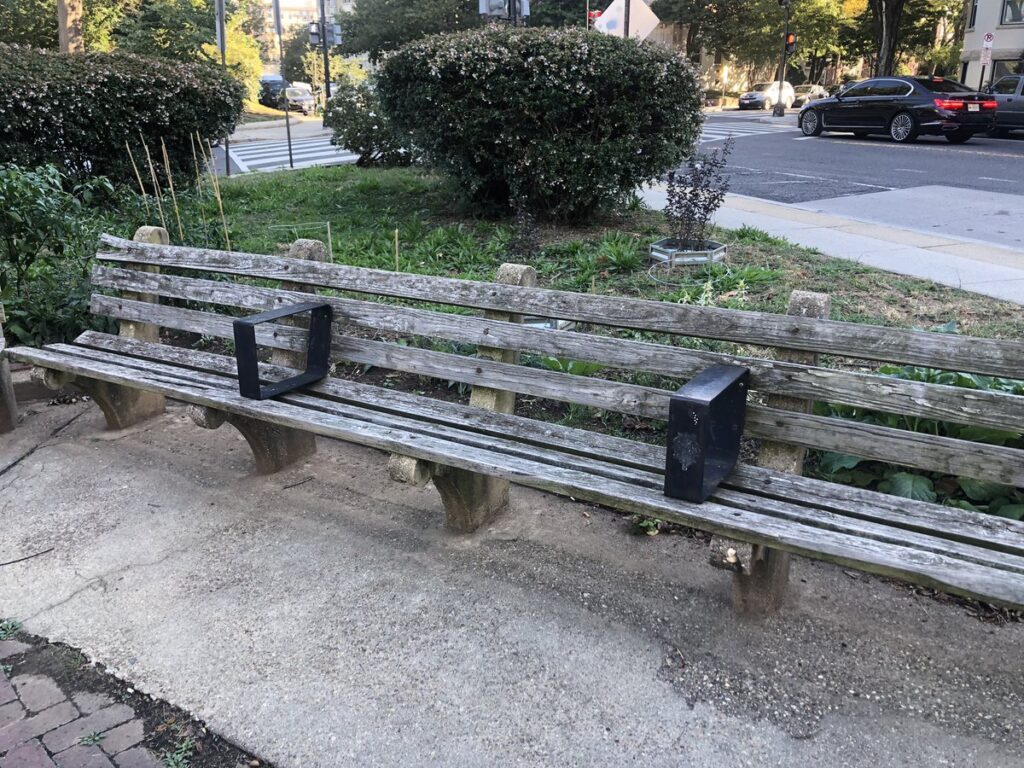On Sept. 20 and Sept. 25, Street Sense Media surveyed 25 homeless residents encamped in the K, L, and M street underpasses within the NoMa Business Improvement District.
After initial difficulty soliciting responses to this relatively long survey, $10 gift cards to Dunkin Donuts were distributed to each homeless person who completed it. Gift cards were donated by Apprenticeship Corner. It is our belief that respondents were honest and forthcoming when answering these quite personal questions.
Findings:
The range in age varied between 18 – 68 years. The average age of people interviewed was approximately 37 years.
The ratio of men to women among respondents was relatively equal, and the vast majority of them were African American.
Sixty percent of respondents were born in Washington, D.C., while the remaining forty percent came to D.C. from Ethiopia, Florida, Maryland, Michigan, Ohio, and Virginia.
Fifty-two percent of respondents stated they have lived in Washington, D.C. their entire lives, while the remaining forty-eight percent reported living in the District for a range between one month to 45 years.
Seventy-six percent of respondents said they choose to live in the District and sixteen percent said they do not choose to live in the District. Among the sixteen percent of respondents who responded “No,” they do not choose to live in the District, seventy-five percent said they are unable to move. For these people who want to move but are unable, the destinations of choice were: North Carolina, South Carolina, southern Virginia, Alabama, and Georgia. Some respondents reported to have family in these southern states. The remaining twenty-five percent of respondents who said they do not choose to live in the District said they do not know where they would want to move.
Twenty-four percent of respondents reported to be physically incapacitated, which is defined in the survey as being physically unable to work.
Sixty-eight percent of respondents said they do not own an ID. A lack of ID prevents people from gaining meaningful employment, accessing government benefits, or applying for housing assistance.
Not a single respondent interviewed for the survey veteran. According to 2018 figures by The United States Interagency Council on Homelessness, there are 306 homeless veterans living in the District.
Twenty percent of respondents were unaware that D.C. has a “right to shelter” — being defined as a legal right to receive shelter.
Regarding education status, fifty-two percent of respondents had at least a high school diploma or GED.
Jobs that respondents have held in the past include: construction, babysitting, dog walking, secretarial work, landscaping, maintenance, cashier, stocking shelves, car wash, driving, cooking, cleaning, masonry, roofing, self-employment, customer service, food service,bartender, lifeguard, dishwasher, telemarketer, delivery, working at Kaiser Permanente, hardware store, group homes, baker, hospitality, warehouse, electrician’s apprentice, and retail.
Fifty-two percent of respondents reported to have a problem with drugs, such as: K2, PCP, marijuana, heroin, cocaine, bath salts, and ecstasy. Of those fifty-two percent of respondents, approximately thirty-one percent had a problem with more than one type of drug.
Eighty percent of respondents reported having a diagnosed mental illness, such as: bipolar disorder, schizophrenia, schizoaffective disorder, PTSD, and major depressive disorder.
Forty-eight percent of respondents said they received some form of government aid, such as food stamps or Social Security disability benefits.
Twenty percent of respondents were ineligible to stay at a D.C. shelter, for reasons such as being barred. Explanations were not requested as to why respondents identified themselves as being ineligible. 20 percent of respondents reported utilizing shelter services in neighboring Virginia and/or Maryland.
When asked if they choose to live in an encampment, ninety-six percent of respondents answered “yes” and gave these reasons: shelters have theft, bedbugs, rats, fights/violence, gangs, curfews, and can be unsanitary. One respondent, James Williams said, “the shelters are run like prisons by people who used to be in prison.”
A key finding was that many of the residents consider their encamped neighbors “family.” One survey participant referred to his neighbors as, “my people.” Another, Laticia Brock was recently awarded a housing voucher. Consistent with the stated appeal of this close family dynamic, she continues to return to the encampment to be with and support her “family.” Many encamped individuals say they do not want to be separated from their tight-knit web of friends and family.
When asked if there was anything encamped individuals are vulnerable to, responses included: theft, being around other people who are on drugs, weather, car crashes (encamped individuals reside adjacent to busy streets), violence, sexual violence, rodents, mosquitoes, diseases, lack of privacy, dangerous people living in the encampments, judgmental people, the now biweekly encampment cleanup, and harassment by pedestrians—one individual detailed a story of being pepper sprayed by a pedestrian.
Fifty-six percent of respondents said they have had their personal possessions thrown out during a cleanup. Encamped individuals said they recover from having their possessions removed through: donations, foraging for more items, and “the will of God.”








